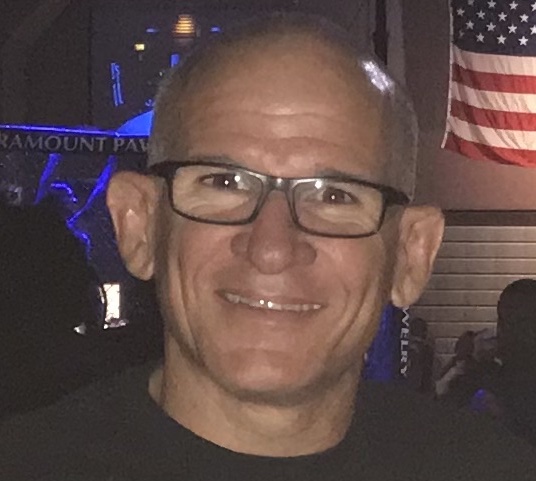
Ribeiro, Eraldo

Eraldo Ribeiro
Associate Professor | College of Engineering and Science: Department of Electrical Engineering and Computer Science
Contact Information
Educational Background
B.Sc. in Mathematics University of Salvador, Bahia, Brazil.
M.Sc. Computer Science Federal University of Sao Carlos, Sao Paulo, Brazil.
Ph.D. in Computer Vision University of York , U.K.
Selected Publications
Referenced Journal Papers
Ribeiro, E. and E.R. Hancock. 2002. Estimating the perspective pose of texture planes using spectral analysis on the unit sphere. Pattern Recognition 35(10): 21412163.
Ribeiro, E., A. Robles-Kelly and E.R. Hancock. 2002. Detecting multiple planes using local spectral distortion. Image and Vision Computing 20(910): 739750.
Ribeiro, E. and E.R. Hancock. 2001. Analysis of Curved Textured Surfaces Using Local Spectral Distortion. Springer Lecture Notes in Computer Science 2013: 407416.
Ribeiro, E. and E.R. Hancock. 2001. Shape from Periodic Texture Using the Eigenvectors of Local Affine Distortion. IEEE Transactions on Pattern Analysis and Machine Intelligence, 23(12): 14591465.
Ribeiro, E. and E.R. Hancock. 2000. Improved orientation estimation for texture planes using multiple vanishing points. Pattern Recognition, 10: 15991610.
Ribeiro, E. and E.R. Hancock. 2000. Estimating the 3D orientation from texture planes using local spectral analysis. Image and Vision Computing, 18 (8): 619631.
Refereed Conference Papers
Carcassoni, M., E. Ribeiro and E.R. Hancock. 2002. Eigenvector Method for Texture Recognition. IEEE International Conference on Image Processing, Rochester, New York, page WA-P4.3.
Carcassoni, M., E. Ribeiro and E.R. Hancock. 2002. Recognition through Modal Analysis of Spectral Peak Patterns. International Conference on Pattern Recognition, Quebec, Canada.
Ribeiro, E. and E.R. Hancock. 2002. An Evidence Combining Approach to Shape-from-shading. International Conference on Pattern Recognition, Quebec, Canada.
Carcassoni, M., E. Ribeiro and E.R. Hancock. 2002. Texture Recognition through Modal Analysis of Spectral Peak Patterns. The 2nd international workshop on texture analysis and synthesis, TextureECCV 2002.
Ribeiro, E. and E.R. Hancock. 2002. Vector transport for shape-from-shading. Asian Conference on Computer VisionACCV, Melbourne, Australia.
Ribeiro, E. and E.R. Hancock. 2001. Analysis of curved textured surfaces using local spectral distortion. In Second International Conference on Advances in Pattern RecognitionICAPR 2001, Rio de Janeiro, Brazil.
Ribeiro, E. and E.R. Hancock. 2000. Perspective pose from spectral voting. IEEE Conference on Computer Vision and Pattern AnalysisCVPR, 1: 656662, South Carolina, USA, June.
Ribeiro, E. and E.R. Hancock. 2000. Texture plane orientation from spectral accumulation. IEEE International Conference on Pattern RecognitionICPR, 1: 802806, Barcelona, Spain, September.
Ribeiro, E. and E.R. Hancock. 2000. An eigen-decomposition method for shape-from-texture. IEEE International Conference on Pattern RecognitionICPR, Barcelona, Spain, September.
Ribeiro, E. and E.R. Hancock. 2000. Curvature estimation using shape-from-texture. International Workshop on Structural and Syntactic Pattern RecognitionSSPR, 327336, Alicante, Spain, August.
Ribeiro, E. and E.R. Hancock. 2000. Shape-from-texture from eigenvectors of spectral distortion. The Mathematics of Surfaces IXThe Ninth IMA Conference on the Mathematics of Surfaces, Institute of Mathematics and its Applications, University of Cambridge, U.K., September.
Ribeiro, E. and E.R. Hancock. 2000. Adapting spectral scale for shape from texture. European Conference on Computer VisionECCV, 421435, Dublin, Ireland, June.
Ribeiro, E. and E.R. Hancock. 2000. A scale adaptive method for focusing spectral peaks. IEEE International Conference on Pattern RecognitionICPR, 3: 123126, Barcelona, Spain, September.
Ribeiro, E. and E.R. Hancock. 2000. Adapting scale by minimizing spectral defocusing for shape from texture. IEEE International Conference on Image ProcessingICIP, WP 10.06, Vancouver, Canada, September.
Ribeiro, E. and E.R. Hancock. 1999. A scale adaptive method for estimating the perspective pose of texture planes. Brazilian Symposium on Computer Graphics, Image Processing and VisionSIBGRAPI, Campinas, Brazil, October.
Ribeiro, E. and E.R. Hancock. 1999. 3-d planar orientation from texture: estimating vanishing point from local spectral analysis. Ninth British Machine Vision Conference, 255264, September.
Ribeiro, E. and E.R. Hancock. 1999. Improved orientation estimation for texture planes using multiple vanishing points. International Conference on Computer Analysis of Images and PatternsCAIP, 1689: 508515, Ljubljana, Slovenia, September.
Ribeiro, E. and E.R. Hancock. 1999. Improved pose estimation for texture planes using multiple vanishing points. International Conference on Image ProcessingICIP, pg. 25AP4A, Keio, Japan, October.
Research
- Spectral Texture Analysis
The problem is approached using a spectral method, based on the Fourier frequency domain. Frequency analysis produces a highly reduced description of a wide range of textures, without the need to define any a priori model. Using the above, I proposed a method to determine the growth stage of microscopic cultures of Penicillium crysogenum, a fungus used to produce penicillin. The stage of growth can be determined by visual inspection of the “roughness” of a culture by microscopy. By using spectral analysis and regarding the images of Penicillium as textures, I developed an automatic method to assess the growth of the culture. - Shape-from-Texture
Whenever present in a landscape or covering an object, texture is one of the most important sources of human perception of three-dimensional shape. The focus of research is on providing a bridge between spectral methods for shape-from-texture and their primitive-based counterparts. - Recovering Perspective Planar Pose
- Recovering Shape from Curved Surfaces
- Adapting the Scale of Local Power Spectral Shape from Shading and SAR Image Analysis Using EM Algorithm
I explored the potential of using a shape-from-shading method applied to three-dimensional surface recovery of synthetic aperture radar (SAR) images. I considered SAR images taken from different types of terrain and mountains. By treating these images as shaded surfaces I was able to recover and label important surface features based on curvature measurements. These features were detected using the expectation-maximization (EM) algorithm to fit a local surface patch to the underlying surface. Shape-from-shading was used to guide the maximization process. - Optical Human Motion Capture
I spent almost two years working for the leading developer in motion capture company Vicon Motion Systems (U.K.) where I was involved in the development of optical human motion capture-and motion

 Give to Florida Tech
Give to Florida Tech